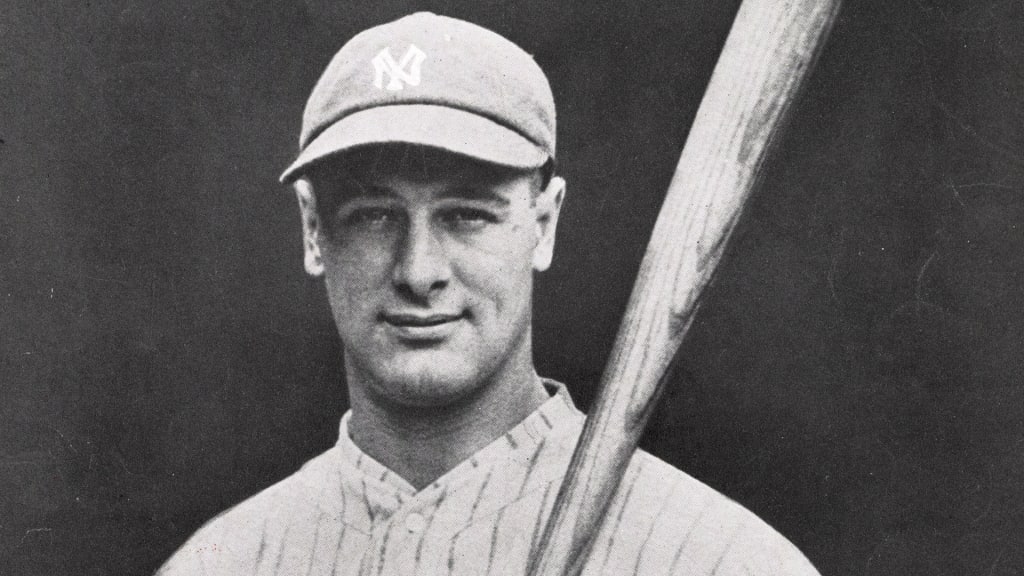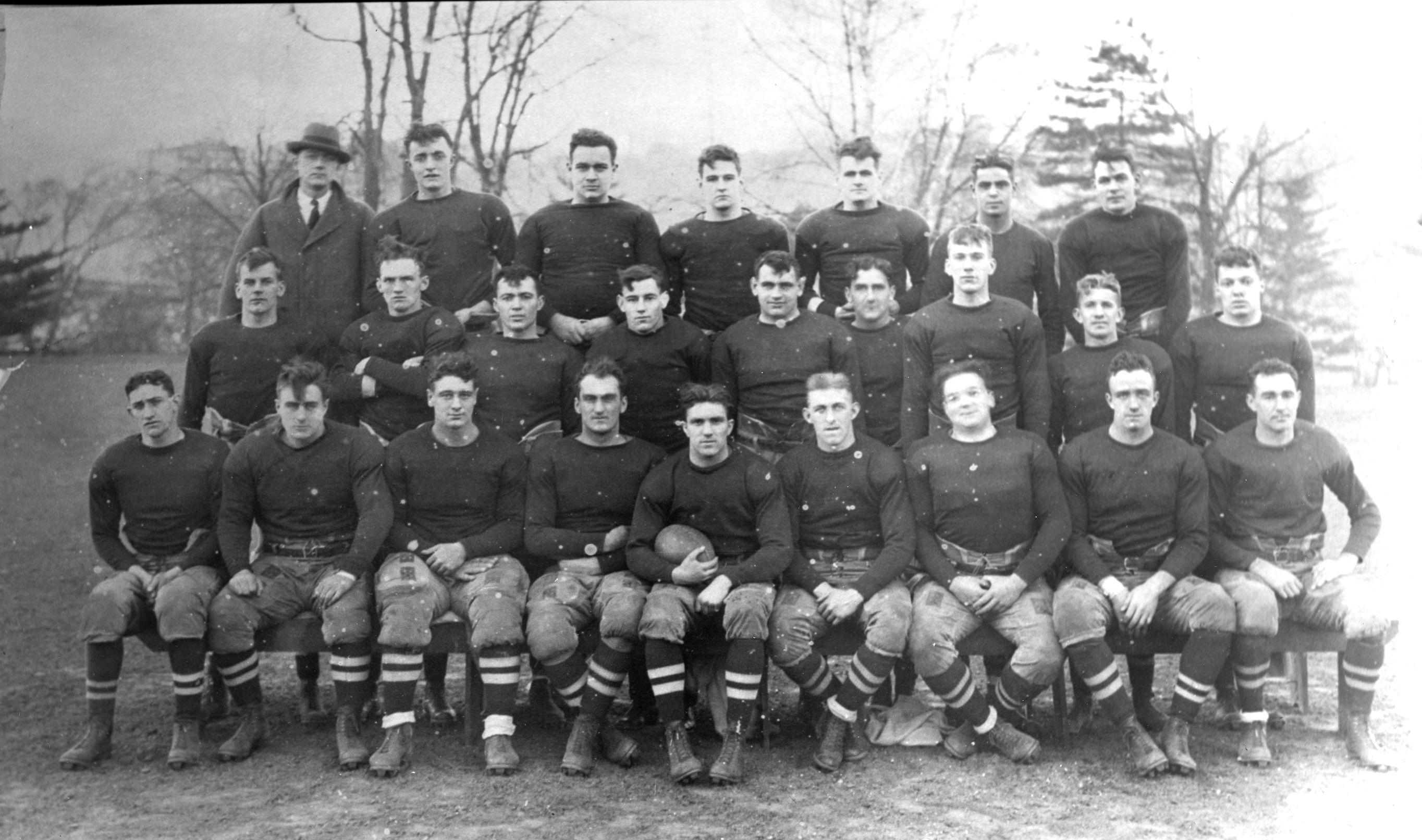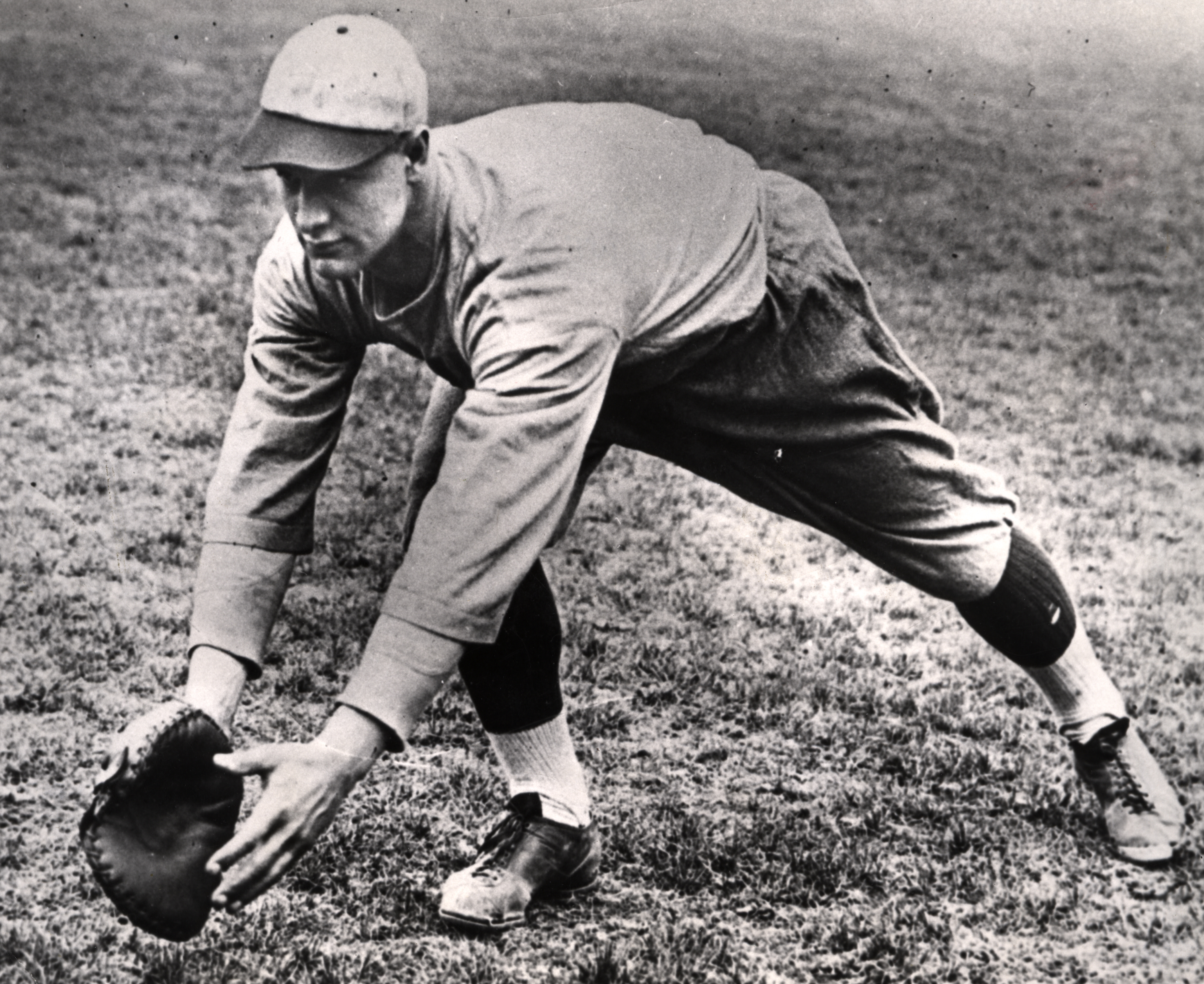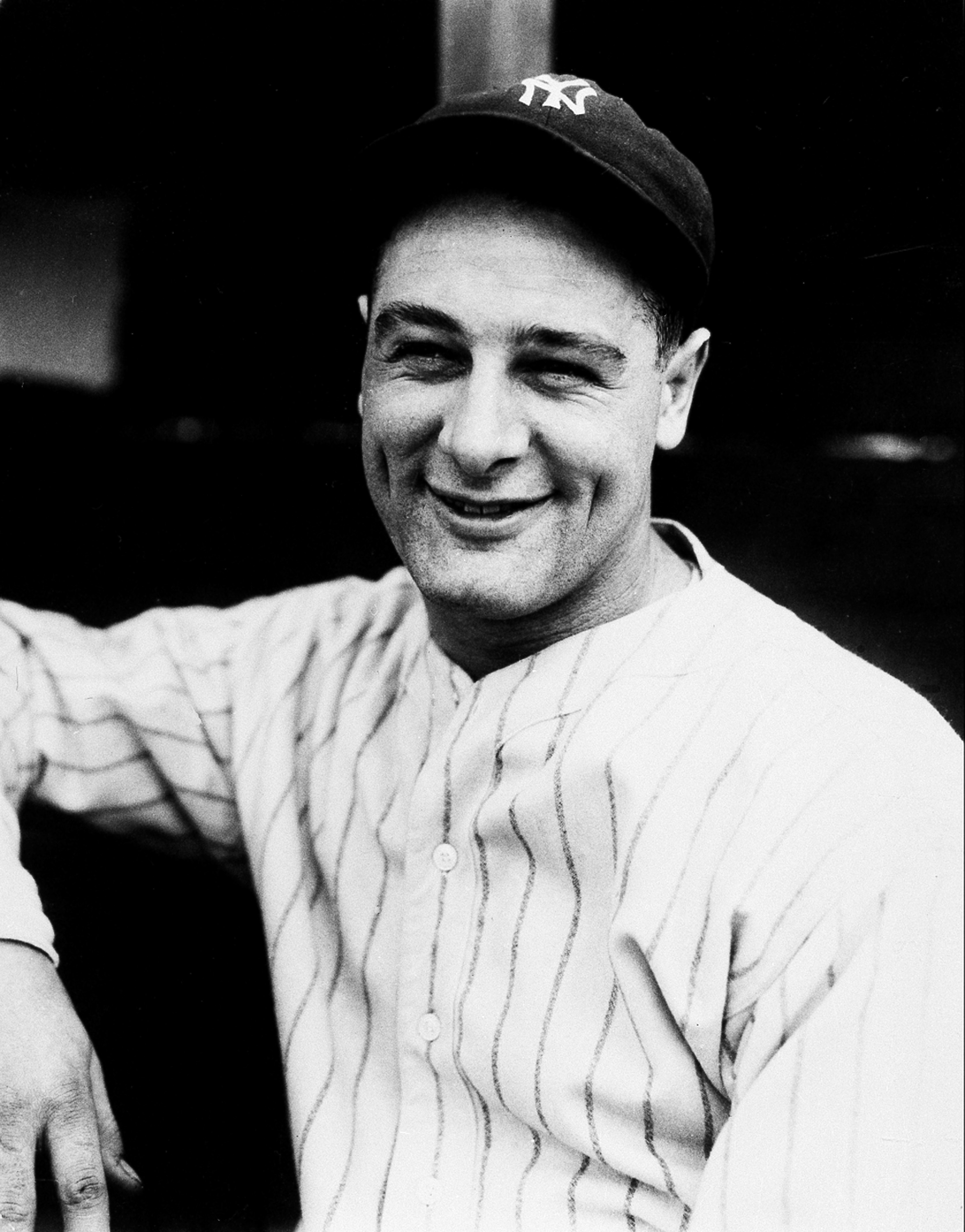
Before he became a Yankees legend and an American icon, before he delivered baseball’s most famous speech or became revered for his bravery in the face of a grave disease, before the monument in center field or the plaque in Cooperstown, before the cover of Time or "The Pride of the Yankees," Lou Gehrig was a shy 19-year-old who also happened to be one of the finest athletes in the country.
And the kid was nervous as could be.
It was a picture-perfect Monday afternoon in New York City -- June 11, 1923 -- yet there was a storm brewing in the pit of Gehrig’s stomach. He stepped off the Jerome Avenue IRT at 161st Street and gazed up at Yankee Stadium, the magnificent edifice that had opened less than two months earlier. With his glove and spikes in hand, he made his way toward the imposing “House That Ruth Built,” which the Great Bambino had christened on April 18 with a three-run Opening Day homer in front of an estimated 74,200 fans — the largest crowd in baseball history to that point.
Gehrig soon spotted the familiar face of Paul Krichell, the scout who had been courting him that spring, and the 40-year-old ex-catcher ushered the youngster into the Stadium for his first workout with the Yankees. Just two days earlier, Gehrig had been standing on the mound at Franklin Field in Philadelphia with “Columbia” across his chest, the starting pitcher in the Lions’ season finale. Now, he was preparing to sign a contract with the New York Yankees and begin his career as a professional baseball player.
It wasn’t a simple decision for Gehrig. His domineering mother, Christina, had dreamed of him earning a degree and becoming an engineer or something of the sort, and going against her wishes was nearly unthinkable to him.
“If there were a Hall of Fame for mama’s boys, Gehrig would have been a shoo-in,” Jonathan Eig wrote in his 2005 biography, “Luckiest Man: The Life and Death of Lou Gehrig.”
Gehrig was a two-sport star at Columbia, rumbling over opponents on the football field “like an ice wagon in a country town” and setting records on the baseball diamond at South Field. On the same day that Yankee Stadium opened, Gehrig struck out 17 Williams College batters, and for the season, he slugged .937. According to the Columbia Baseball 2023 Record Book, neither mark has been topped.

But despite his athletic prowess, Gehrig never felt entirely comfortable in an Ivy League setting. The reticent homebody didn’t fit in with his Columbia classmates, many of whom came from rich stock and whose parents did not work on campus as housekeepers or part-time handymen, as Gehrig’s did. Money was always tight at home. The reason Gehrig played only one season at Columbia was that he was suspended from athletic competition his freshman year after getting caught moonlighting as “Lou Lewis” to earn a few bucks with the Hartford Senators of the Class A Eastern League in 1921.
With an offer from the Yankees that amounted to a huge windfall for his working-class family -- $2,000 for the final four months of the 1923 season, along with a $1,500 signing bonus -- Gehrig consulted a trusted business professor of his at Columbia named Archibald Stockder.
“Lou, you’ve been in my class for almost a year,” Stockder told him. “I think you better play baseball.”
Many years later, when asked about the decision to turn pro when he did, Gehrig told The New York Times, “A fellow has to eat. At the end of my sophomore year, my father was taken ill, and we had to have money. I had been playing on the college ball team, and I had had eight offers to join professional clubs. So, when there was no money coming in, there was nothing for me to do but sign up.”
***
Then, as now, just because a coveted prospect inked a contract didn’t mean he was guaranteed to pan out. And the veteran Yankees players could be forgiven for raising an eyebrow when the bashful teenager wandered through their clubhouse that June day.
According to Ray Robinson’s 1990 biography, “Iron Horse: Lou Gehrig in His Time,” Gehrig was introduced to Ruth and then personally escorted out to the field by manager Miller Huggins to take batting practice. With a few regular players -- including Ruth, Everett Scott, Aaron Ward and Wally Pipp -- as well as a few supporters from Columbia looking on, Gehrig grabbed a 48-ounce hunk of lumber belonging to the Babe from the row of bats in front of the Yankees’ dugout along the third-base line and sheepishly stepped into the left-handed batter’s box.
“If he seemed nervous as the devil,” Robinson wrote, “it was certainly normal under the circumstances.”

Gehrig swung and missed at the first couple of pitches, then produced a couple of weak infield grounders. But with his personal cheering section in the stands rooting him on (much to his embarrassment), he suddenly found his groove, blasting a succession of fastballs into the section of seats in right field known as “Ruthville.”
“When the fusillade stopped, the Yankees at the cage were quiet,” Robinson wrote. “One or two stole glances at each other. But Gehrig’s personal claque could not restrain themselves. ‘Atta boy, Lou!’ they yelled. ‘Babe knows he’s got company now!’”
Indeed, he did. Yet it was a small miracle that it was the Yankees who were able to snare Gehrig. The Detroit Tigers and Washington Senators were among several American League teams that had him on their radar, and the New York Giants went so far as to give him a tryout in the spring of 1921, soon after he graduated from Commerce High School that January.
Having rooted for John McGraw’s team while growing up in a Washington Heights tenement near the Polo Grounds, it was a golden opportunity for Gehrig. He impressed McGraw with his hitting that day, but after a ball went through his legs at first base, the legendary skipper dismissed him -- one of McGraw’s greatest mistakes. How different might the history of New York baseball be today had he realized that he was actually watching one of the greatest first basemen who would ever take the field?
Instead, it was the keen-eyed Krichell who reeled in Gehrig. In April of 1923, while the Yanks headed up to Fenway Park to begin their first road trip of the season, Krichell took a train down to New Brunswick, N.J., to watch Rutgers and Columbia play at Neilson Field. Making his lone appearance as an outfielder that season, Gehrig caught Krichell’s attention by blasting two long home runs over the right-field fence and into the trees along George Street.
“I’ve found another Babe Ruth,” Krichell told Yankees business manager Ed Barrow, and it wasn’t long before the executive shared the scout’s excitement. In Columbia’s next game, Gehrig pitched a complete game and delivered a jaw-dropping moonshot in a 7-2 win over NYU. Three weeks later, in a 15-2 romp of Wesleyan, Gehrig pummeled a baseball into Columbia lore.
“The sphere went over the center field stands and hit the School of Journalism building,” the Hartford Daily Courant reported.
Teams had been tripping over themselves to sign “the Babe Ruth of the colleges,” who also drew comparisons to the St. Louis Browns’ left-handed first baseman, George Sisler -- the 1922 MVP who hit .420 with 134 runs scored. At a time when signing college players was still something of a novelty, the Yankees announced that Gehrig along with two other collegians, Lafayette shortstop and captain Mike Gazella and Fordham catcher Ed Vanderbeck, were now employed by the club -- but playing time was no guarantee. Gehrig was joining a team with a veteran first baseman in the 30-year-old Pipp, who batted .329 while helping lead the Yanks to their second straight American League pennant in 1922.
“Just in what capacity Miller Huggins intends to use Gehrig is a bit problematical at present,” went a June 14, 1923, Brooklyn Daily Eagle article titled, “A New ‘Sisler’ on the Horizon,” adding that it was “likely that the former idol of South Field will be used as an understudy for Wally Pipp, with an occasional chance of breaking into the lineup in the role of pinch hitter.”
***
The Eagle was on the mark, as Gehrig spent his first four days as a Yankee on the bench, watching the team go 1-3 as its lead in the American League over the Philadelphia Athletics fell to just two games. His parents were perplexed as to why the Yankees would pay him all that money and not have him play, but the reserved Gehrig just quietly watched his teammates and kept himself ready in case his name was called, never attempting to ingratiate himself with the team’s star players.
Pitcher Waite Hoyt, who won 19 games for the Yankees in each of the previous two seasons, was just four years older than Gehrig. His first impressions of the player he would spend several years rooming with on the road and eventually revere were not good.
“He was a man of complete unsophistication when he joined the Yankees early in his career,” Hoyt wrote in a 1983 letter. “He was possessed by a severe ‘mother complex,’ which caused him, in his off-field activities, to conduct himself in a rather juvenile manner. I must say quickly that in the first three years of his association with Yankee ballplayers, he was not very popular. His associates were of the insouciant type, very reticent, and, in short, the extra men.”

Gehrig’s first taste of the big leagues finally came on Friday, June 15, after the offense broke out for nine runs in the first two innings against the Browns. With the Yanks leading, 10-0, and starting pitcher Herb Pennock in complete command of the game, Huggins sent Gehrig in for Pipp in the top of the ninth inning.
With two outs and a runner on first, Browns right fielder Jack Tobin hit a grounder to Gehrig that he scooped up cleanly before stepping on the bag to end the game. Two days later, a similar scenario played out in which Gehrig took over at first base for the final frame and recorded the final putout of a 9-0 win over Detroit, this one on a throw from third baseman Joe Dugan.
On Monday, June 18, one week after putting on a show with Ruth’s war club during his Yankee Stadium workout, Gehrig grabbed his own stick for his first big league at-bat. Huggins called on him to pinch-hit for Ward to begin the ninth inning of a game that the Yankees were losing to the Tigers, 11-3. With Ty Cobb peering in from center field and right-hander Ken Holloway looking to finish off what would ultimately be a complete-game 14-hitter, Gehrig dug his cleats into the left-handed batter’s box at Yankee Stadium for his first of 9,815 plate appearances (including 150 in 34 World Series games).
“Young Lou Gehrig, whose name is beginning to appear daily in the box score, got his first chance to bat in the ninth,” the Daily News reported. “He poked a savage foul down the right field foul line and then fanned.”
It was another two years before Gehrig became a regular in the Yankees’ lineup. After his solitary June at-bat, he saw just four big-league plate appearances in July and none in August, spending the majority of the season with the Hartford Senators until Pipp tweaked his ankle and Huggins needed a first baseman for a late-September series in Boston. Starting in four games at Fenway, Gehrig batted fourth, right behind Ruth, and hit .474 (9-for-19) with six RBIs, three doubles, a triple and his first of 493 career home runs.
But Pipp remained entrenched at his position, forcing Gehrig to spend the majority of 1924 in Hartford, where he crushed 37 homers. On June 1, 1925, Gehrig pinch-hit for Paul Wanninger (not Pipp, as is commonly believed) -- beginning a streak of 2,130 consecutive games played that lasted until 1939. The next day, looking to wake up his slumping team by shaking up the lineup, Huggins inserted Gehrig at first base in place of Pipp, and the rest is history.
***
Looking back a century later to when that awkward teenager went through that uneasy workout at Yankee Stadium, it is astonishing what came to be. Historians and casual fans alike still marvel at how impactful Gehrig was during his career and how utterly heroic he was in battling ALS. Equally noteworthy is just how relevant Gehrig remains today. Baseball fans needn’t look hard to find evidence of Lou’s legacy.
This month in Cooperstown, N.Y., the Lou Gehrig Fan Club will convene at the National Baseball Hall of Fame and Museum to honor the centennial anniversary of Gehrig’s debut. The group, formed online by Bill Hunter five years ago, comprises more than 3,000 members from all over the country and beyond, many of whom (including Hunter) did not grow up rooting for the Yankees.
“When folks describe why they’re a fan of Lou, literally almost every time it’s about how good of a human he was, how he took care of his family, how good of a husband and friend he was, how professionally he approached his job,” Hunter says. “And then at the end of it, it’s, ‘Oh yeah, he was also unreal as a player.’”
Gehrig’s presence is particularly felt throughout Major League Baseball every June 2, when players celebrate Lou Gehrig Day by wearing special patches on their uniform and ceremonies are held in every ballpark.
“Obviously, he was a Yankees great, but I think the awareness he has brought to ALS is even bigger than his impact on the baseball field,” said current Yankees first baseman Anthony Rizzo.
A quick scan of this year’s college baseball landscape reveals Gehrig’s lasting impact at that level, as well. The Vanderbilt Commodores wore a patch this spring that said “Live Like Lou” to help raise money for the foundation of the same name in an effort to fight ALS.
“I had a coaching friend that I grew up with in New Hampshire, who was the baseball coach at East Carolina, Keith LeClair, and he passed away from ALS,” said Vanderbilt head coach Tim Corbin. “So, when the Live Like Lou organization reached out to me, I thought, ‘This is wonderful; this is a great opportunity.’”
And according to Baseball-Reference, there were at least a half dozen college baseball players this season named Gehrig. University of North Alabama redshirt freshman shortstop Gehrig Frei was born in Alpharetta, Ga., in 2002 and named after his late grandfather’s favorite player. “My dad always said that his first son that he had, he’s going to name him Gehrig, and sure enough I was the first son,” Frei told the Forsyth County News. “I like it. It’s a baseball name, and I’m thankful to have it.”
From Manhattan’s Upper East Side -- where the site of Gehrig’s birth will soon be home to scientific research facility Iron Horse Labs -- to digital streaming services -- Lorne Michaels and Peter Farrelly are said to be among the executive producers turning Eig’s “Luckiest Man” into a scripted TV series for Apple, according to The Hollywood Reporter -- Gehrig occupies a place in today’s collective conscience that would have been inconceivable as the unsure teenager traded in his Columbia threads for Yankee pinstripes 100 years ago.
“Gehrig touched something in us because of his simple love for the game and his awkwardness, to be honest,” said Eig, still happy to talk about the Iron Horse nearly two decades after his book was published. “It was quaint, it was charming, to see this super-strong, handsome guy playing in the Roaring Twenties when everybody was living this wild life, and all he wanted to do was go home to his mama and eat her home-cooked meals and read a book at night or maybe go see a movie. He was just this low-key, humble superstar, and he was so shy. He just wanted to play baseball and take care of his family and be left alone.”
Nathan Maciborski is the executive editor of Yankees Magazine. This story appears in the June 2023 edition. Get more articles like this delivered to your doorstep by purchasing a subscription to Yankees Magazine at www.yankees.com/publications.